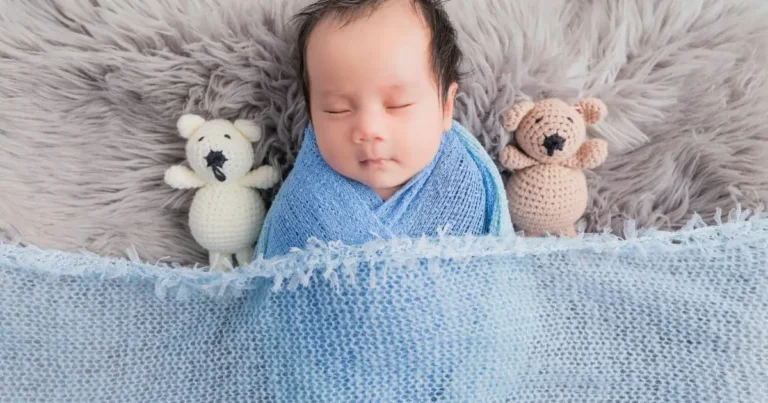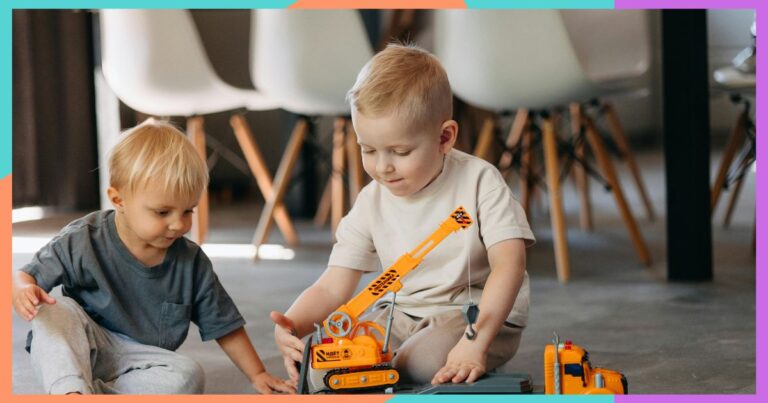10 Baby Facts Every New Parent Should Know

10 Baby Facts Every New Parent Should Know – Surprising Newborn Truths
Bringing a new baby into the family is a joyful and transformative journey. For new parents and expecting families, the journey ahead is filled with joy, love, and countless moments of discovery. Babies are fascinating little beings, and the more we learn about them, the more we can appreciate just how incredible they truly are. From their rapid development to their unique reflexes, newborns possess a variety of surprising, adorable, and sometimes mind-blowing characteristics that many parents may not be aware of.
Understanding these baby facts can provide valuable insights into a newborn’s behavior and development, helping parents feel more confident in their parenting journey. By learning how babies recognize their mother’s voice at birth, why they cry without tears, or how their sense of smell helps them bond, parents can deepen their connection with their little one and respond more intuitively to their needs. These facts not only offer reassurance but also serve as fun conversation starters, making them perfect for baby shower trivia games, parenting discussions, and general knowledge sharing.
Whether you’re an expecting parent eagerly preparing for your baby’s arrival or a new mom or dad adjusting to life with a newborn, these fascinating baby facts will help you see your little one in a whole new light. They remind us that babies are not just tiny humans—they are remarkable individuals with extraordinary abilities from the moment they are born. So, get ready to be amazed as we explore some of the most incredible and little-known facts about newborns!
1. Babies Have More Bones Than Adults
Why It Happens:
- Newborns are born with about 300 bones, but as they grow, some fuse together, resulting in 206 bones in adults
- This fusion helps babies grow strong and develop mobility
Fun Variations:
- “Did you know your baby has nearly 100 more bones than you?”
- A perfect question for a baby facts jeopardy game
Presentation Tip:
- Create an infographic comparing a baby’s skeletal structure to an adult’s
- Add a real X-ray comparison for a fun and educational touch
2. Newborns Recognize Their Mother’s Voice at Birth
Why It Happens:
- Babies develop hearing in the womb, around week 25 of pregnancy
- Studies show that newborns calm down when they hear their mother’s voice
Fun Variations:
- “Can babies recognize their father’s voice too?”(Yes, but they are more responsive to their mother’s voice.)
- Great for a baby facts trivia questions and answers game
Presentation Tip:
- A short video demonstrating a newborn reacting to familiar voices
- Try a simple at-home experiment by speaking softly and observing your baby’s response
3. Babies Can Breathe and Swallow at the Same Time
Why It Happens:
- Until about 3–4 months old, babies have an epiglottis that allows simultaneous breathing and swallowing
- This ability helps them nurse without choking
Fun Variations:
- “Can adults do this?”(No, this ability diminishes as we grow.)
- An interesting baby facts true or false quiz question
Presentation Tip:
- Use an anatomical diagram to show how baby airways differ from adults’
- Share an animation showing how this reflex works
4. A Baby’s Sense of Smell Is Super Strong
Why It Happens:
- Babies use their sense of smell to recognize their mother and bond
- They can distinguish their mother’s scent from others within a few days
Fun Variations:
- “Can babies recognize their father’s scent too?” (Yes, but they initially show a stronger preference for their mother.)
- Perfect for adorable baby facts discussions
Presentation Tip:
- Show a newborn reacting to their mother’s scent vs. a stranger’s scent
- Share a study about newborn scent recognition and bonding
5. Babies Cry Without Tears
Why It Happens:
- Tear ducts develop fully after birth, and real tears appear between 2–4 weeks
Fun Variations:
- “Do all baby animals cry without tears too?” (Some do, some don’t!)
- A great addition to baby facts trivia questions and answers
Presentation Tip:
- Time-lapse images showing when babies start shedding real tears
- A side-by-side comparison of newborns vs. older babies crying
6. Newborns Have a Reflex That Makes Them Look Like They’re Walking
Why It Happens:
- The stepping reflex disappears after 2 months
- This instinct helps prepare babies for real walking later on
Fun Variations:
- “Can babies actually support their weight when ‘walking’?” (No, it’s just a reflex!)
- Fun for a baby facts quiz
Presentation Tip:
- A short clip of a newborn “walking” when held upright
- Explain how early reflexes contribute to motor development
7. Babies Experience Rapid Brain Growth
Why It Happens:
- A baby’s brain grows to twice its size within the first year
- This fast growth explains why babies learn so quickly
Fun Variations:
- “What is the weight of a baby’s brain at birth?” (About 25% of an adult brain)
- Perfect for mind-blowing baby facts
Presentation Tip:
- Use a side-by-side brain development timeline
- Highlight major milestones linked to brain growth (smiling, babbling, crawling)
8. Newborns Can’t See Colors Clearly at Birth
Why It Happens:
- Babies mostly see black, white, and shades of gray at first
- By 3 months, they start seeing colors
Fun Variations:
- “Which colors do babies see first?” (Bright, high-contrast colors such as red and yellow.)
- Perfect for weird baby facts trivia
Presentation Tip:
- Show side-by-side images of how a newborn perceives colors vs. an adult
- Explain how high-contrast patterns can help visual development
9. Babies Are Born with More Taste Buds Than Adults
Why It Happens:
- Newborns have twice as many taste buds as adults
- They prefer sweet flavors, which makes breast milk appealing
Fun Variations:
- “Can babies taste salty foods at birth?” (No! That ability develops later)
- Great for baby facts jeopardy
Presentation Tip:
- Chart showing how taste bud sensitivity changes with age
- List foods babies can and can’t taste at different stages
10. Babies Have Their Own Unique Fingerprints Before Birth
Why It Happens:
- Fingerprints form by week 10 of pregnancy
- Even identical twins have different prints
Fun Variations:
- “Do all animals have fingerprints?” (Some do, like koalas!)
- Great for baby shower trivia
Presentation Tip:
- Image of a baby’s tiny fingerprint magnified
- Suggest a fun activity: parents can take ink prints of their newborn’s fingers
FAQs About Baby Facts
Why do newborns have so many reflexes?
Newborns are born with a variety of reflexes that play a crucial role in their survival and early development. These automatic responses, such as the rooting reflex, which helps babies find their mother’s breast for feeding, or the Moro reflex, which causes them to startle when they feel a sudden loss of support, are essential for adaptation. Reflexes like these not only help babies meet their basic needs but also contribute to motor skill development as they grow. Over time, many of these reflexes disappear as babies gain more voluntary control over their movements, marking key milestones in their physical and neurological growth.
How can parents use these facts in daily life?
Understanding these baby facts can make parenting easier and more enjoyable. By knowing that a baby prefers their mother’s voice from birth, parents can use their voice to soothe their newborn during fussy moments. Learning that babies cry without tears for the first few weeks can reassure parents who may wonder why their child appears upset but isn’t producing tears. Recognizing reflexes, such as the stepping reflex, can help parents appreciate how these automatic movements prepare their baby for later developmental stages. These facts also encourage parents to bond with their baby through sensory stimulation, communication, and observation, making everyday interactions even more meaningful.
Are all these facts universal?
While most of these baby facts apply to all newborns, there can be slight variations among individual babies. Some infants may develop certain abilities faster than others, and genetic or environmental factors can influence milestones like vision development or reflex intensity. Additionally, premature babies may exhibit different responses, as some reflexes and senses continue to develop in the final weeks of pregnancy. Although these facts provide general insights into newborn behavior and development, parents should always remember that every baby is unique and may experience these milestones at their own pace.






